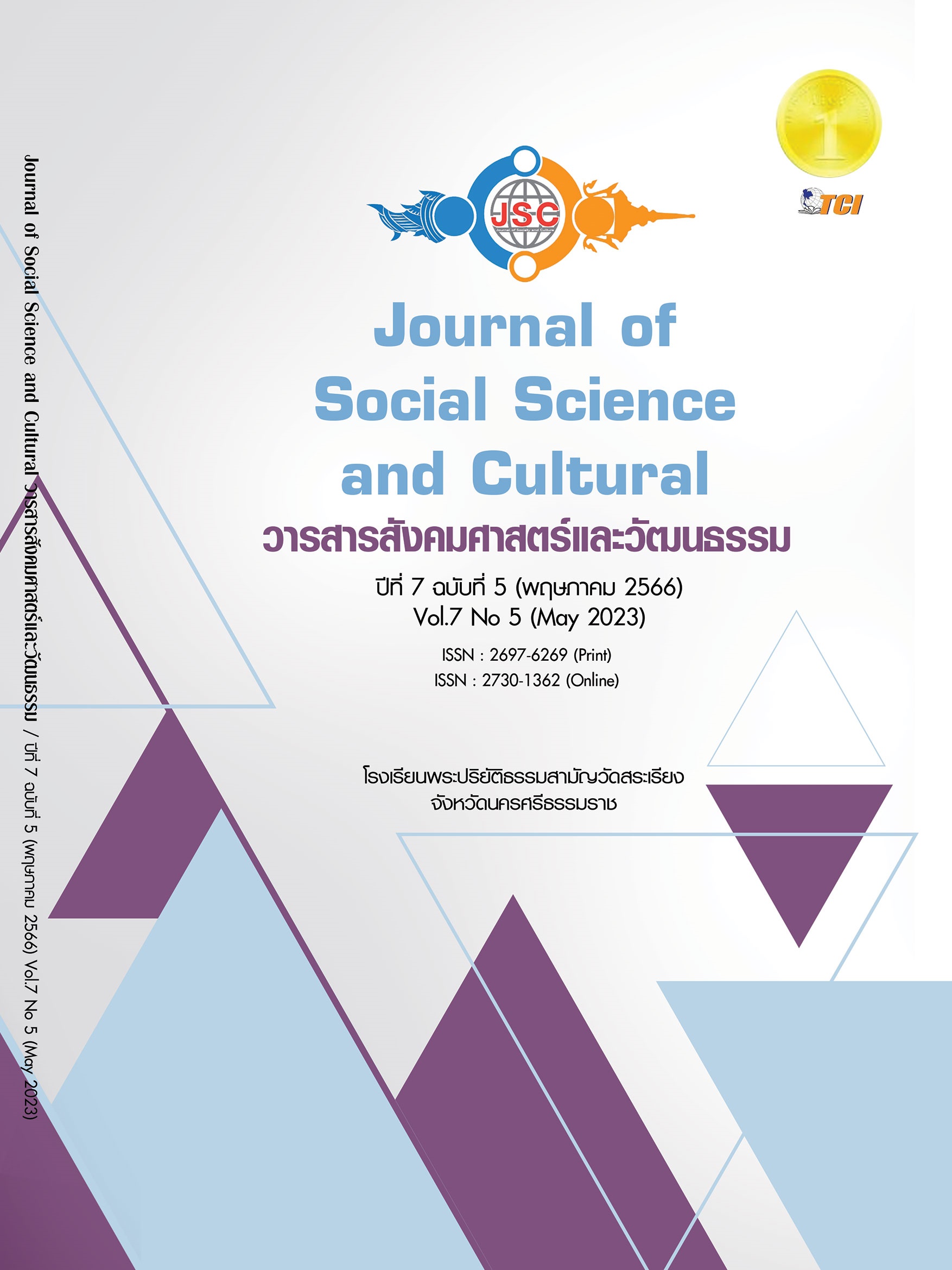GENDER DIVERSITY IN PERSONS WITH AUTISM : CHALLENGES AND SUPPORTS
Main Article Content
Abstract
Persons with autism who are gender minorities face several challenges in life. Through the lens of intersectionality, when one minority identity intersects with another, challenges the person must face are even more complex. This paper discusses challenges of persons with autism who are gender minorities, and discuss how to provide support to them. The challenges they face are such as people do not believe that persons with autism’s genders are diverse. A number of persons with autism feel that autism influences how they discover their identities. Persons with autism also have communication difficulties which influence how they express their needs. In addition, persons with autism who are gender minorities have limited opportunities to receive gender education specifically designed for them and have difficulties finding health service providers who understand both autism and gender diversity. Therefore, parents, education providers, and health providers are important in providing support effectively to persons with autism. In providing health and education services, service providers should consider challenges that persons with autism who are gender minorities encounter and provide services with sensitivity. They also need to be aware that there may be unexpected challenges that can occur during service providing and thus services should be provided with flexibility. Education and training for persons with autism who are gender minorities and service providers is the key to effective service provision.
Article Details
References
กรมส่งเสริมและพัฒนาคุณภาพชีวิตคนพิการ. (2565). ข้อมูลสถานการณ์คนพิการ 31 ธันวาคม 2565. เรียกใช้เมื่อ 25 มีนาคม 2566 จาก https://dep.go.th/th/law-academic/ knowledge-base/disabled-person-situation
กระทรวงศึกษาธิการ. (2552). ประกาศกระทรวงศึกษาธิการ เรื่องกำหนดประเภทและหลักเกณฑ์ของคนพิการทางการศึกษา พ.ศ. 2552. กรุงเทพมหานคร: กระทรงศึกษาธิการ.
American Psychiatric Association. (2013). Diagnostic and Statistical Manual of Mental Disorders. (5th ed.). Author: San Francisco.
Cain, L. & Velasco, J. . (2021). Stranded at the intersection of gender, sexuality, and autism: Gray’s story. Disability & Society, 36(3), 358-375.
Dewinter, J. et al. (2017). Sexual orientation, gender identity, and romantic relationships in adolescents and adults with autism spectrum disorder. Journal of Autism and Developmental Disorders, 47(9), 2927-2934.
George, R. & Stokes, M. A. (2018). Gender identity and sexual orientation in autism spectrum disorder. Autism, 22(8), 970-982.
Gerhardt, P. F. (2018). Sexual education and individuals with ASD: What behavior analysts need to know. Eden Princeton Lecture Series. Retrieved March 1, 2023, from https://www.cigna.com/static/www-cigna-com/docs/ individuals-families/health-wellness/topic-autism/2020/march-autism-handout.pdf
Herrick, S. J. & Datti, P. A. (2022). Autism Spectrum Disorder and Sexual Minority Identity: Sex Education Implication. American Journal of Sexuality Education, 17(2), 257-276.
Hillier, A. et al. (2020). LGBTQ+ and autism: Experiences and challenges. International Journal of Transgender Health, 21(1). 98-110.
Jones, R. P. & Cox, D. (2015). How race and religion shape millennial attitudes on sexuality and reproductive health. Retrieved March 1 , 2023, from https://www.prri.org/wp-content/uploads/2015/03/PRRI-Millennials-Web-FINALpdf
Kourti, M. & Griffin, E. (2021). Developing a good relationship with an autistic transgender or non-binary person as a professional. In Kourti, M. (Ed.), Working with Autistic Transgender and Non-Binary People (pp. 125-138). Philadelphia: Jessisca Kingley Publisher.
Lewis, L. F. et al. (2020). “Straight sex is complicated enough!”: The lived experiences of autistics who are gay, lesbian, bisexual, asexual, or other sexual orientation. Journal of Autism and Developmental Disorder, 51(7), 2324-2337.
Loomes, R. et al. (2017). What Is the Male-to-Female Ratio in AutismSpectrum Disorder? A Systematic Review and Meta-Analysis. Journal of American Academy of Child Adolescent Psychiatry, 56(6), 466-474.
Miller, R. (2020). Out of (queer/disabled) time: Temporal experiences of disability and LGBTQ+ identities in U.S. higher education. Critical Education, 11(16), 1-20.
Murphy, J. et al. (2020). Autism and transgender identity: Implication for depression and anxiety. Retrieved March 1, 2023, from https://doi/10. 1016/j.rasd.2019.101466
Neumeier, S. M. (2021). Beyond ‘for you own good’: Youth liberation, disability justice and the importance of autonomy in the lives of autistic transgender children. In Kourti, M. (Ed.), Working with Autistic Transgender and Non-Binary People (pp. 33-48). Jessisca Kingley Publisher: Philadelphia.
Sarret, J. C. (2016). Biocertification and neurodiversity: The role and implication of self diagnosis in autistic communities. Neuroethics, 9(1), 23-26.
Strang, J. F. et al. (2018). “They thought it was and obsession”: Trajectories and Perspective of Autistic Transgender and Gender- Diverse Adolescents. Journal of Autism and Developmental Disorder, 48(12), 4039-4055.
US Department of Education. (2004). Individuals with Disability Act. Retrieved March 1, 2023, from http://idea.ed.gov/


